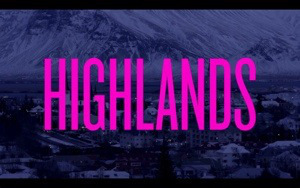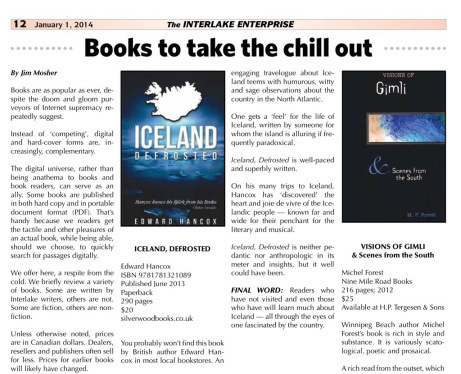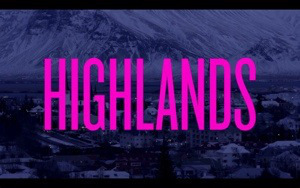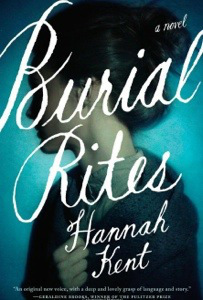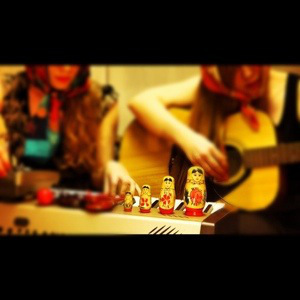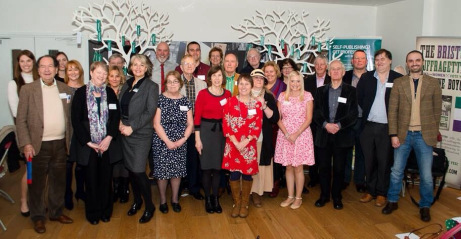Edward Hancox's Blog, page 11
March 9, 2014
CELL7
CELL7 is making a splash in the Icelandic and international music scene. Cited by some as the Icelandic MIA, CELL7 is multi-talented Ragna Kjartansdóttir, a Filipino-Icelandic rapper, songwriter and sound engineer.
Previously of Icelandic hip-hop team Subterranean, CELL7 returned to the music scene in autumn 2013 with her album, CELLF. CELLF was brought to life with well known producers, Earmax and Introbeats. CELL7 also collaborated with singer songwriters Lori Walsh, Drífa Sigurðardóttir and Sunna Ingólfsdóttir. The song with Drífa, ‘Feel Something,’ is wonderful, described by CELL7 as “an old fashioned love song about lost opportunities” but is so much more. Other contributors to the album include the Polish powerhouse production team PlanB. Not, as I thought, U.K. rapper Plan B. See below for my embarrassing mistake!
CELLF is far from the stereotypical view of Icelandic music. It’s a hugely appealing mixture of hip hop, rap and dance. Her star is rising too, with a recent successful performance at Sónar Reykjavík, and appearances in Europe and at Airwaves planned too.
How would you describe your music?
I would describe it as versatile. I hate being boxed in so as rule of thumb, I just make music that I feel is good, period. Its everything from good old fashioned 90’s hip hop to party driven dance hall music. Whatever moves me at the time.
Iceland is better known for a different type of music. I’m thinking of the success of Björk, the ethereal Sigur Rós or the neo-classism of Ólafur Arnalds. Does this make it difficult as a new artist emerging from Iceland?
No, I don’t think so, because their success, as well as other artists such as OMAM and GusGus, contributes to the overall exposure of the Icelandic music scene. Their success has made more people aware of Icelandic music and I think people from all over have an eye open for what is happening here on our island. For example, the DJs at the Seattle based radio station KEXP, are really up to date what’s happening in the Icelandic music scene. Even though their focus is mainly on indie rock music they somehow noticed my album, CELLF, and recommended it to their listeners.
It is also inspiring to see other Icelandic musicians succeed abroad. It doesn’t necessarily have to be on the same major level as Bjork, Sigur Rós and OMAM. Many Icelandic artists have been able to go on minor tours in Europe and/or North America, and have managed to achieve some fan base abroad. That within itself is a great achievement.
Where does the name ‘Cell 7’ come from?
It doesn’t come from anywhere in particular, at the time I really didn’t have any plans of becoming an emcee, it just happened really quickly. As I started recording and performing I had to have an artist name, Cell7 was the best I came up with at the time.
You’ve recently collaborated with Plan B? How did that come about? How was it?
These guys are actually the Polish PlanB, a producer team signed to Warner Records in Poland. The team consists of Bartek Krolik; singer, bass player and producer, as well as producer Marek Piotrowski. They contacted me through MySpace a couple of years ago and we just worked on the song through email and a couple of Skype meetings.
What do you have planned for 2014?
My dream has always been to perform with a live band and as I’m writing this I have actually begun the transition. I’ve always wanted to play overseas as well so I’m hoping that will happen this year as well, so I guess 2014 is all about making dreams come true.
Previously published on Iceland Review online.


March 8, 2014
Iceland, Defrosted at Booka.
Some places just get it right, don’t they?
I had my first visit to Booka Books in Oswestry today, and they definitely have got it right. The combination of books, coffee and cakes is too good to miss, but when it’s presented like this, it’s like catnip to me.
I lost myself browsing for books (I settled for Nathan Filers’ The Shock Of The Fall), treated myself to a toffee fudge slice and latte, and loved the quirky artwork of Matt Sewell and the mock Penguin covers – The Wizard of Oswestry being a favourite.
Even Hannah Kent, author of Burial Rights, is coming to Booka on 27th March. I got myself a ticket. You can read my review of Burial Rights here. I can’t wait to hear what Hannah has to say about Iceland.
The best news though? Booka now stocks Iceland, Defrosted.


February 27, 2014
New ÍRiS song
ÍRiS has sprung a surprise today, a brand new track. It’s called ‘I Try’, and is from the sessions for her debut album, Penumbra. You can listen to it below, and just in case you missed it, my review of Penumbra is attached too.
So I have this problem. ÍRiS has just released her debut album, Penumbra. One website recently said that she might have produced the best Icelandic album of the year, and I think that they might just be right.
The problem? I have gotten to know Iris over the past few months. She travelled to London to help me launch my book, Iceland, Defrosted at the Embassy of Iceland this summer, and then graciously helped me out when the band booked for the Reykjavík book launch failed to show. We’ve met for coffee, and she has counseled me on how to perform in public.
Ordinarily, of course, I’d just post a review and be done with it. But how can I do that, with someone I’d call a friend. With honesty. That’s the only way. Please find a review of Iris’s debut album, but with the disclaimer that I do know her personally.
First off, this album is crowd-funded (via the Icelandic site, Karolina Fund) and produced without the backing of a major record label in tow. Whilst this isn’t unusual in Iceland, sometimes a detectable drop in quality can be heard. That’s not the case here; Penumbra sounds excellent.
‘This Morning’ starts things off with its piano and strings, and ends with a surprising fuzz of feedback. Daybreak has definite jazz leanings and cocky piano to prove it, whereas ‘Sea Song’ might just be the standout track. It has beautiful, urgent piano and makes you have goose bumps. Goose bumps is a strange word, isn’t it?
‘Swiftly Siren’ has an eerie quality about it, that at once suits its murderous video, and provides a showcase for Iris’s sultry, elegant voice. Halfway through, she turns into Beth Gibbons from Portishead. It’s no bad thing.
‘Misturmóða’ is the only song here in Icelandic. It’s a compelling listen, piano and haunting strings with Iris’s vocals overlaying the whole thing wonderfully. ‘One Way’ is a fine way to end proceedings.
So there we are. A glowing, laudatory review of the debut album from Iris. Don’t forget that disclaimer, but remember this too—I meant every word.


February 23, 2014
Highlands. Not the highlands.
Highlands are Logi Pedro Stefánsson from Retro Stefson and the very talented Karin Sveinsdóttir. They seem to have come from nowhere, but are ready formed, ready to take on the dance floors of Reykjavík, and seemingly, my headphones.
They have recently given away there debut ep. I’ve no idea why; people would have surely paid good money for such music. I’ve paid an awful lot more for a hell of a lot worse. Just six tracks, it is a joyful twenty minutes.
It starts with the swirling Berlin, all hectic beats, buzzing bass and that wonderful ‘la la la’ refrain. Hearts is Highlands calling card; a standout track consisting of Karin’s sumptuous vocals being looped, lovely chiming and old fashioned story of love.
Rolling Stones begins with echoed, distant vocals before breaking into more electronic loveliness; look out for the surprising 90’s ‘word!’ halfway through and a further showcase of Karin’s vocal talents. Stop Signs is the sound of a nighttime city a full tilt, whilst Sirens is the most Retro Stefson sounding of all the tracks. It bounces along.
I was so taken with Heartlands that I thought I’d give Logi a shout.
How did you and Karin meet?
We meet at a singing competition that I was judging for my old junior-college. And then at parties and through mutual friends. I’ve also produced some tracks for her brother and stuff. It’s all been super chill.
How would you describe your music?
I would say that it’s really hip hop inspired. And I’m talking about everything from Chicago drill to Drake to Kanye. That’s kind of the core of it all. Loads of subs. The hip hop scene also has a loving relationship with punk and rock. And our stuff is kind of coming from all of that.
Does this mean the end of Retro Stefson then? I really hope not…
No we’re still working a lot, writing new music and touring. This is just something totally different…
Where does the name ‘Highlands’ come from?
It’s has a lot of meanings… The Icelandic Highlands are actually a pretty special place. Coming from downtown 101 Reykjavík I didn’t really think a lot about the highlands when I was growing up. I remember being around 12 years old realising how special and mysterious they are. Lot of folklore surrounding the highlands. The name just fitted perfectly.
I see that Highlands are playing Sónar and Iceland Airwaves. Do you have any other plans? An album maybe?
We are definitely playing more concerts at least. And we’re releasing our debut EP for free on the internet. We want the songs to get out there and we’re actually digging in to our own pockets to make it as good as possible. To make a top level EP free for you guys.
I really love the song ‘Hearts’. What is it about?
Well, I don’t want to say too much because everybody should be able to connect to the lyrics from their own experiences. We’ve all had situations like the one in the song… We all hate sleeping alone.
How do you and Karin come up with songs?
I write the songs and some of the lyrics. Then Karin comes in and we try to make it all fit, work on the songs together and then record. Then I work on the songs for maybe months, maybe just some hours. And then it suddenly works. We’ve recorded so many demos and instrumentals. It’s kind of crazy.
First published on Iceland Review Online.


February 19, 2014
New Iceland
Gimli, Manitoba in Canada is also known as ‘New Iceland’, as it holds the greatest population of Icelanders outside of Iceland. This is mainly due to immigration from Iceland in the 1870′s when a large group of Icelanders settled here from the Westman Islands.
The 26,000 people with Icelandic heritage in the area still maintain links to Iceland; Icelandic festivals are honoured, a three day celebration of all things Icelandic takes place in the summer and you can study Icelandic at the University of Manitoba.
Best of all, the local newspaper – Interlake Enterprise – reviewed and enjoyed Iceland, Defrosted. I’m so pleased that it’s travelled to this Icelandic outpost and was well received!


February 18, 2014
Highlands
Highlands are Logi Pedro Stefánsson from Retro Stefson and the very talented Karin Sveinsdóttir. They seem to have come from nowhere, but are ready formed, ready to take on the dance floors of Reykjavík, and seemingly, my headphones.
They have recently given away there debut ep. I’ve no idea why; people would have surely paid good money for such music. I’ve paid an awful lot more for a hell of a lot worse. Just six tracks, it is a joyful twenty minutes.
It starts with the swirling Berlin, all hectic beats, buzzing bass and that wonderful ‘la la la’ refrain. Hearts is Highlands calling card; a standout track consisting of Karin’s sumptuous vocals being looped, lovely chiming and old fashioned story of love.
Rolling Stones begins with echoed, distant vocals before breaking into more electronic loveliness; look out for the surprising 90’s ‘word!’ halfway through and a further showcase of Karin’s vocal talents. Stop Signs is the sound of a nighttime city a full tilt, whilst Sirens is the most Retro Stefson sounding of all the tracks. It just bounces along.
Anyway, dig in. It’s all good.


February 17, 2014
Book Review: Burial Rights – Hannah Kent
A teenage Hannah Kent first visited Iceland on a Rotary Exchange in 1985. It must have had a profound effect on her, as some years later she has written this curious and enchanting book set in North Iceland in 1829.
Kent tells the story of Agnes Magnúsdóttir, a young woman sentenced to death for her part in the murder of Natan Ketilsson and Pétur Jónnsson on Vatnsnes peninsula. Agnes is remanded to a remote farm to be supervised by district officer Jón Jónsson whilst she awaits her fate. This decision causes much consternation with Jón’s family and the small community in which they live, but their fears of living with a murderess might just be unfounded.
Agnes was the last person to be executed in Iceland. I’m not going to retell the story here; the author does a much better job than I ever could, and besides, I wouldn’t want to spoil it for you, would I?
The characters are well formed and realistic. Agnes in particular is well written, and I suspect that her voice will be in my head for days after finishing this book. This may well be due to the author basing the story and therefore the characters on fact, and the subsequent in-depth and clearly skillful research she has carried out. This is reinforced by factual documents being reproduced throughout the text; for example, the correspondence from Björn Blöndal, District Commissioner.
Kent sometimes uses overly poetic language when describing, to say it is grating would be a gross overstatement, but it does occasionally jar. This is a minor quibble though, and nothing that detracts from the overall enjoyment of the book
Burial Rites has received glowing reviews from the world over, and rightly so; the story is well told and provides a vivid canvas for the author to paint her descriptions of North Iceland, complete with volcanic landscapes, frequent snow, tumbling turf houses and luminous Northern Lights. She quite clearly had been bitten by the Iceland bug too, one which I’m all too familiar, and this shines through her prose. I don’t think anyone could have written so well about Iceland without falling in love with the country first.
In conclusion, Burial Rites is a book well worth reading; Agnes will live in your head, and it’s chilly landscapes and intriguing story will make you clutch your mug of coffee just a little tighter on a cold winters day.
4/5
Originally published on Iceland Review Online.


February 14, 2014
Five ‘new’ Icelandic artists to fall in love with on Valentines Day.
Icelanders don’t really celebrate Valentines Day. Nevermind, here are five Icelandic artists that to fall in love with on the sloppiest day of the year.
5. Muted
Who? Producer/electronic artist Bjarni Rafn Kjartansson from the remote East fjords.
What? One man music business – even makes his own record covers.
Listen to? His excellent collaboration with Jófríður Ákadóttir from Pascal Pinon/Samaris.
4. Fura
Who? Fura is a collaboration between the songstress Björt Sigfinnsdóttir and the producer duo Hallur Jónsson and Janus Rasmussen behind Bloodgroup.
What? Late night electronics and stunning vocals.
Listen to? Demons
3. Cell7
Who? Icelandic/Filipino rapper Ragna Kjartansdottir.
What? The Icelandic MIA? Unexpected rap and hiphop from the streets of Reykjavík.
Listen to? Sometimes ft. Drífa
2. Vök
Who? A trio of talented musicians including a saxophonist. No, come back!
What? Delicious Icelandic sound, yet falling between The XX & Portishead.
Listen to? Before.
Highlands
Who? Logi Pedro Stefánsson from Retro Stefson has joined the young and talented Karin Sveinsdóttir.
What? Electronic indie pop with real heart. Produced by Múm. Perfect for your Valentine.
Listen to? Hearts (of course!)


February 9, 2014
Growing Up In North Iceland
Kaldbak is a farm in North Iceland, near the much better known Húsavík. It’s a remote and unspoilt little slice of Iceland that most can only dream of visiting, let alone live there.
I frequently dream of such things. Packing in the rat race, quitting my job and turning off the internet forever. What would it be like? Is it all it’s cracked up to be?
I caught up with Harpa Fönn Sigurjónsdóttir from the band Grúska Babúska to find out more.
Where did you grow up?
I grew up in Kaldbak, a farm just outside the small fishing village of Húsavík, off the north coast of Iceland, a 500 km drive from Reykjavík.
My parents, who were both raised in 101 (downtown Reykjavík), like we locals call it, decided in the 70’s to escape the “buzzing” city life (as buzzy as a 200,000 people city can get!) and bought an abandoned farm 2 kms outside the village of Húsavík. They left everything behind and started a new life there. They blended in with the small community, started renovations on the old farm house, planted trees, reclaimed the soil, kept some hens, horses and a cat and a dog, and started reproducing…. That’s where I come into the story.
How did you find it?
I loved it! Kaldbak is a magic land, and growing up as a kid there is like being inside a fairytale. All my friends always wanted to hang out at my wonky little farmhouse and we went on many adventures, exploring the area and land around the farm, mainly inspired by Indiana Jones of course! We found caves and paths and hidden places that we were sure that nobody had ever discovered. It was a magical time, and being so close to the beautiful village (20 mins walk tops) made it even better. To be able to enjoy the freedom and peace of the country life, as well as the “urban” approach, is a privilege. That’s for sure.
Where did you go to school?
I went to primary and secondary in Húsavík, but high school and college in Reykjavík and Germany and England.
What did you do in your spare time?
I had many hobbies, somehow I think it’s easier to fit more things into your agenda as a kid (and for the parents also) when you live in a small community like this. Firstly, activities and hobbies are cheaper. Secondly, the commute takes no time, as there is a 10 min walk to everything. Thirdly, everybody knows everyone, so it was always definite that you would know somebody also involved in the same activities as you. Fourthly, your parents never need eto escort you anywhere, the village is so safe of course.
Well, apart from being like Indiana Jones in my spare time, I had piano lessons, was a founder and member of a drama club in secondary school, went horseback riding almost every day during summer, skiing almost every day during winter, played handball and then the normal teenage things when that started kicking in…
What is your earliest memory?
I think it’s one of the times I went on a bus for the first time in Reykjavík, with my gran. I apparently really liked it and I demanded that wefollow the bus to where it “slept,” which we did. Also, when I got my sister’s old Yamaha keyboard. I remember that like it happened yesterday…
Why did you move to Reykjavik?
When I got older I realized that the opportunities in such a small place, as many as there are for kids, are not many. I wanted to study and meet new people and try to live in an urban environment. All my family (apart from parents) is here in Reykjavík, and I was really close to them and my gran and granddad. Also, my sister had already left to Reykjavík for her studies, so really, there was never a question. So I first moved in with my gran, but she had a private apartment in the garage, so man, was that a popular party place in high school!
Would you move back?
Well, I wish I could…. my profession requires that I stay here in Reykjavík, but I’ve been looking more and more into going back and making my projects and productions there. I’ve recently established an art residency and festival in Kaldbak. 2013 was its third year , that’’s really inspiring and I bring eight visual artists from Reykjavík and abroad to Kaldbak to live and work for a week, resulting in a festival the last day, art exhibition and a music show during the evening.
I really love that project and it brings something to the community, to me and also the artists. I really like the idea that other people can get inspired by Kaldbak and Húsavík, the way I was lucky enough to be. I think Kaldbak and Húsavík are the most inspiring places in the world.
Originally published on Iceland Review Online.
For more details about Grúska Babúska please click here.


February 8, 2014
Talkin’ the talk.
It’s been a crazy few weeks promoting Iceland, Defrosted. It feels like I’ve been on tour, well, almost.
It started a couple of weeks back with a visit to Bristol to the SilverWood Writers & Open Day, held in Foyles, Bristol. It was great to meet my fellow SilverWood authors including Sandy Osborne, Alison Morton, Wendy Percival, Debbie Young, Dave McCall, Helen Hollick and loads of others. This list is not exhaustive! It was also fantastic to meet all of the SilverWood team – I’d met Helen Hart before, but Emily, Joanna and Sarah were friendly and welcoming. Emily & Sarah have been particularly involved the production of Iceland, Defrosted – mainly problem shooting – so it was nice to thank them in person for all their hardwork. SilverWood are such a supportive outfit. Helen describes it as ‘hand holding for new authors’, and she is right.
I gave a short input about crowdfunding, and read an equally short passage from Iceland, Defrosted. I then took questions from the audience as part of a Q & A panel. I found this bizarre as I don’t consider myself an expert on anything.
Next up was Nordicana, in London. A festival of everything Nordic, but with a focus on Scandicrime, I wasn’t quite sure whether I would fit in. I needn’t have worried – I had been asked to do a signing on Sunday afternoon, but the book had sold so well, there wasn’t enough copies left for me to sign. It’s a nice problem to have, I suppose.
Finally, yesterday I gave two author talks at two local libraries. I was invited to do so by Shropshire Libraries, and I was delighted to oblige. The events were to celebrate National Library Day, and having been a lifelong Library user, coupled with the Icelandic obsession for all things bookish, it seemed to make sense. I was shocked to find that both events had sold out; I’ve never sold out anything before, and probably never will again. People were even turned away at the first event!
Anna from Wenlock Books came with me to provide both support and books, whilst my sister helped by reading a couple of passages to give me (and the auidence) a break. Staff at both libraries were very supportive, even if one honestly thought I was bringing a live puffin with me. It was lovely to have such keen, attentive audiences – it made my job so much easier.
I don’t think I’ll ever get used to signing books; I still feel self-conscience doing this, probably stemming from the fact that I don’t feel like an author. Yet.
I managed to get a few laughs too; mainly at my ‘crazy puffin facts’, ie. facts about Puffins that are not necessarily true:
- Puffins mate for life. Unless a hotter, more attractive puffin comes along.
- There is an 82% chance a concealed puffin is staring at you right now.
- Puffins take it in turns to pose for tourist’s photos. During the busy summer months, there is a three day on, two day off shift pattern.
- A Puffin once wandered into the BBC newsroom by mistake, but was interviewed about politics anyway.
- If you count the lines on a Puffins beak, this has absolutely nothing to do with how many years old they are.
All in all, I received overwhelmingly good feedback, and it’s given me the confidence and motivation to do further book events in the future. Now all I need is a puffin to come with me!






